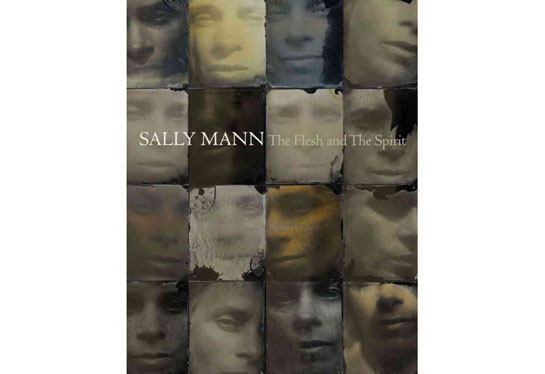Centro d’Arte Contemporanea Castello di Rivara
Bepi Ghiotti, Sources | Sorgenti
10.10.2010 14.11.2010
curated by Diletta Benedetto and Franz Paludetto
Hosted in the Medieval Castle, home of the Museum of Italian Art 1985-2010, Sources of Bepi Ghiotti is an open project born in 2007 as a reflection on the necessity of a greater awareness on the importance of water on Earth.
Intertwining technique and contents, the series of ten large photographic pieces unveils the essential, the origin, the source: the point, unique, from which everything is originated.
Sources, moves on a symbolic territory so dense it risks bringing the audience into a hyper-trophic, overwhelming, excessive assignment of meanings, eventually minimizing the value of the artist's action, framing it in a far too easy system of semantic references.
Here's why it's necessary to look back to the long relationship between Ghiotti and Photography, advertising in particular, in order to better understand the value in the concepts of complexity /essentiality in the artist’s iconological research. The typical image bulimia in the advertising system addicts the consumer to the ingestion of a quantity of shots among which the relationship between the contents seems to be built in retrospect, almost trying to "justify" some kind of plot in the mind of the audience bringing it to an effective message decoding: simple, unique, unmistakable.
In Sources instead Ghiotti appears to move through a someway backwards path: starting extremely complex, loaded, a true generator of sense, makes it finally to render essential, flawless and noiseless. The chosen subject, significantly charged in symbolic attributions: place in which, according to many cosmogonist myths, water is separated from the earth to give birth to life, which focuses archetypal concepts such as sacredness, origin, boundary, nevertheless economic, political, environmental issues that have to do with water and it's incommensurable value, is solved in the final synthetic perfect form which we can see, only after physically walking kilometers of land, after having left behind, along the road and during the time separating shootings - since 2007 - all the unnecessary, the blatant, the redundant.
As if, the most interesting re-appropriation that Bepi Ghiotti operates on the photographic tool was achieved through his personal, rather existential, path to synthesis. Almost telling about a trip backwards, made of subtraction and of lightening once arrived at the sources. That only in the end shows a new symbolic, ancestral, sacred beginning, able to distill the initial complexity in a simple, essential vision.
Centro d’Arte Contemporanea Castello di Rivara, Italy
http://www.castellodirivara.it/dettmostra.php?lang=1&sez=4&idmostra=352
All images cortesy by Castello di Rivara Centr for Contemporary Art, © Bepi Ghiotti
Here's why it's necessary to look back to the long relationship between Ghiotti and Photography, advertising in particular, in order to better understand the value in the concepts of complexity /essentiality in the artist’s iconological research. The typical image bulimia in the advertising system addicts the consumer to the ingestion of a quantity of shots among which the relationship between the contents seems to be built in retrospect, almost trying to "justify" some kind of plot in the mind of the audience bringing it to an effective message decoding: simple, unique, unmistakable.
In Sources instead Ghiotti appears to move through a someway backwards path: starting extremely complex, loaded, a true generator of sense, makes it finally to render essential, flawless and noiseless. The chosen subject, significantly charged in symbolic attributions: place in which, according to many cosmogonist myths, water is separated from the earth to give birth to life, which focuses archetypal concepts such as sacredness, origin, boundary, nevertheless economic, political, environmental issues that have to do with water and it's incommensurable value, is solved in the final synthetic perfect form which we can see, only after physically walking kilometers of land, after having left behind, along the road and during the time separating shootings - since 2007 - all the unnecessary, the blatant, the redundant.
As if, the most interesting re-appropriation that Bepi Ghiotti operates on the photographic tool was achieved through his personal, rather existential, path to synthesis. Almost telling about a trip backwards, made of subtraction and of lightening once arrived at the sources. That only in the end shows a new symbolic, ancestral, sacred beginning, able to distill the initial complexity in a simple, essential vision.
 |
| ELBA Bepi Ghiotti, Sources, Castello di Rivara 2010 |
 |
| TIBER Bepi Ghiotti, Sources, Castello di Rivara 2010 |
 |
| RHINE Bepi Ghiotti, Sources, Castello di Rivara 2010 |
 |
| EBRO Bepi Ghiotti, Sources, Castello di Rivara 2010 |
 |
| Severn Bepi Ghiotti, Sources, Castello di Rivara 2010 |
 |
| Bepi Ghiotti, Sources, Castello di Rivara 2010 |
Centro d’Arte Contemporanea Castello di Rivara, Italy
http://www.castellodirivara.it/dettmostra.php?lang=1&sez=4&idmostra=352
All images cortesy by Castello di Rivara Centr for Contemporary Art, © Bepi Ghiotti






























